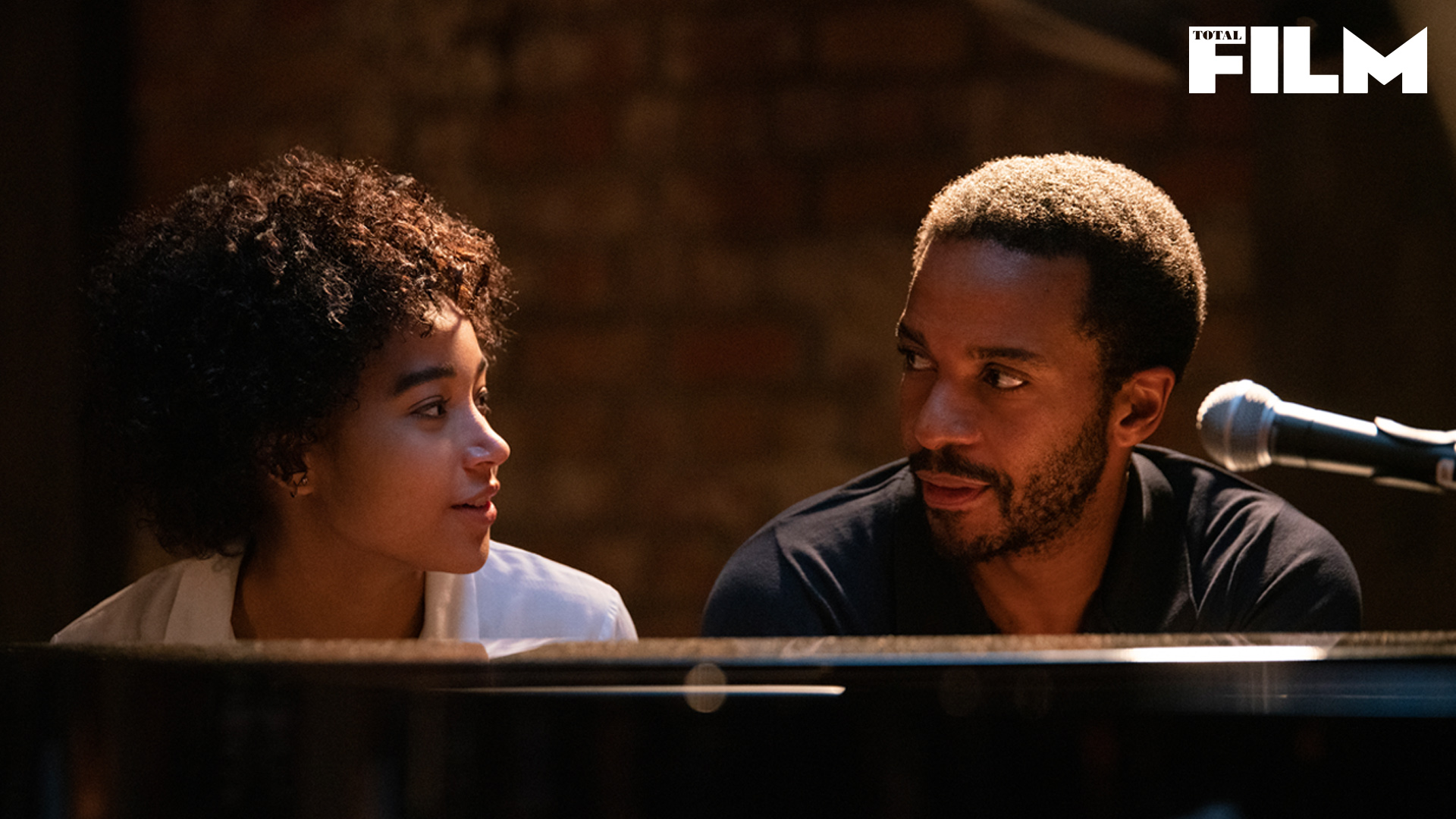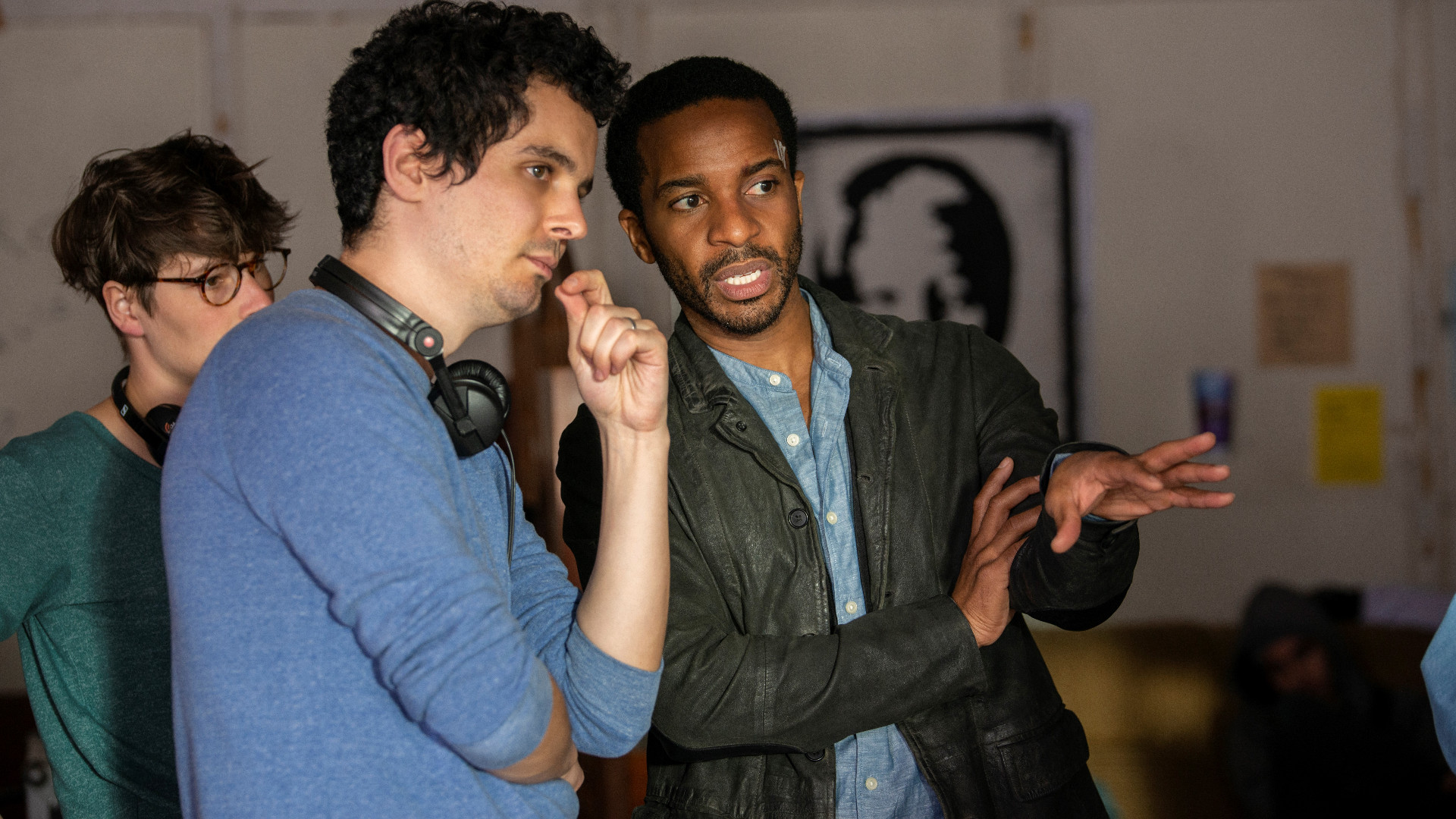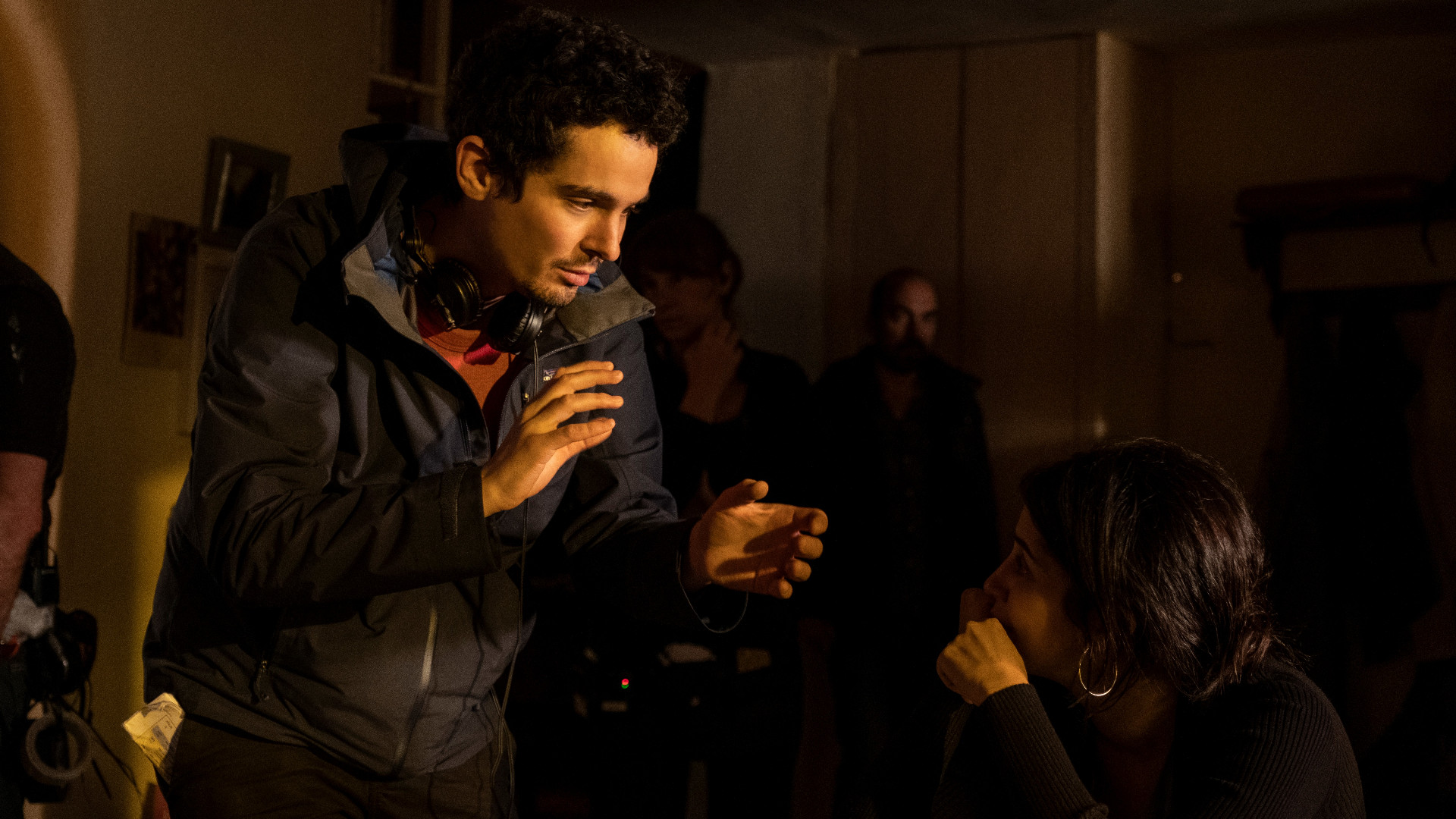The making of The Eddy: Damien Chazelle talks through directing his new Netflix series
Damien Chazelle talks about his new Netflix series, The Eddy

In a tiny club in the 13th arrondissement in Paris, all life can be found. Love affairs, family feuds, money matters… all bound up with one single musical genre: jazz. The name of the club? The Eddy. “The Eddy is a musical oasis for different kinds of people, all of whom are struggling with lives outside of this club,” Damien Chazelle explains. “But when they come in here, the idea is that they find a universal language that they can share no matter where they come from originally.”
No, Chazelle, the jazz-loving Oscar-winning director of La La Land, has not jacked it all in to open his own dive bar (though it’s probably crossed his mind). The Eddy is a new eight-part Netflix drama. Chazelle directs the first two episodes, which initially focus on ex-pat jazz musician Elliot (André Holland) and his clarinet-playing teenage daughter Julie (Amandla Stenberg). Others introduced include Elliot’s ex-girlfriend, singer Maja (Joanna Kulig), and his business partner at The Eddy, Farid (Tahar Rahim).
Famed for Steven Soderbergh’s The Knick and High Flying Bird, Holland, who speaks English and French in the show, thought it was a “nice marriage” of acting styles. “I’ve heard that French actors tend to be more cerebral, whereas American actors tend to be more physical. We want to throw chairs and cry… which we do!” he chuckles, sitting down with Total Film in Berlin’s Hotel de Rome. “I think us creating the family of this show was how I imagine a band gets put together.”
The ‘family’ for The Eddy actually began with producer Alan Poul (Six Feet Under), who also directs two episodes, and composer Glen Ballard, famed for producing Alanis Morissette’s album Jagged Little Pill. Back in 2013, Ballard brought Poul a suite of jazz songs that he’d written; he’d even formed a band specifically to record and play them. “I was completely hooked,” says Poul, “and Glen said, ‘Let’s make a show about a jazz club in Paris.’”
Shortly afterwards, Poul recruited Chazelle, who had just unveiled his second film, the jazz-themed Whiplash to huge acclaim at the Sundance Film Festival. Chazelle was hooked too, particularly by Ballard’s notion of making The Eddy a contemporary jazz club. “I think that a lot of times when you say the words ‘jazz’ and ‘Paris’ together,” he says, “people assume an older version of the city or the music and we wanted to put it in a modern context.”
Musical chairs

British-born Jack Thorne (His Dark Materials), the lead writer on the series, began to think about how to make the show “as representative as possible” of jazz. “Alan puts it beautifully – that idea of everyone getting their solo, and everyone’s solo feeling very, very different, and very reflective of the character.” As the episodes progress, the baton is passed and other characters, such as Farid’s wife Amira (Leïla Bekhti) take centre stage. “It’s a really exciting way to get to know every character in the show.” While Houda Benyamina and Laïla Marrakchi direct two episodes each, it was Chazelle who set the visual template for the show, with nervy handheld vérité-style camerawork and 16mm film stock. While he spent some of his childhood growing up in Paris – his father is French-American – he’s never shot there. “It was incredible to be able to actually put cameras on the ground and shoot in a place that gave birth to things like the French New Wave,” Chazelle says, “as well as being a place where some of the first iconic uses of jazz in film have happened.”
He cites movies like Elevator To The Gallows by Louis Malle, with its Miles Davis score, Jean-Luc Godard’s French New Wave primer Breathless and the 1960s scores by Michel Legrand for such classics as The Umbrellas Of Cherbourg and Bande À Part. This filtered down to the actors, who ploughed through movies including 1983 film À Nos Amours, starring Maurice Pialat and Sandrine Bonnaire. “We watched that to pay attention to the father-daughter relationship,” informs Stenberg (The Hate U Give). “We also had more contemporary references – like Girlhood and Blue Is The Warmest Colour.”
Bringing all the latest movie news, features, and reviews to your inbox
Musically, Chazelle sent over a file of artists to listen to – particularly Thelonious Monk, the American jazz pianist and composer. “Listening to his music but also watching some footage of him, just the way he rehearsed and the way he worked with his band, was helpful to me,” says Holland. There were outings to live Paris jazz clubs too – a city that “never gave up on jazz ever,” remarks Ballard. And then there were music lessons. Lots of them. “I’d never touched a piano before the series,” says Holland.

The musical influences seeping into the show were eclectic; on screen, we even see a North African-inspired group fronted by French rapper Sopico. As for the songs, they became integral to each episode. “The first question I would ask the writer’s team was ‘What’s the emotional arc of the episode?’” says Thorne. “The second question was, ‘What’s the song?’ We were always looking at the lyrics, listening to the songs, feeding off them and just questioning, questioning, questioning, why these songs belong to these episodes.”
When it came to recording the musical numbers, the only way to do it was as jazz intended: live. “Who would try that?” laughs Ballard. “But we tried it and we pulled it off. This is the way real music gets made; this is the way people play music and not playback with a touch of a button, how much you have to sweat and give to creating a great performance every single night. It’s not about the records but about you being in the room in that moment.”
With its mix of English, French and other languages, and gritty backdrop that even sees the club fall foul of some violent debt collectors in the early episodes, The Eddy may take some viewers aback. “A lot of people will hear ‘Damien Chazelle’ and expect this to be La La Land. But it’s not,” says Holland. “It’s a totally different thing. It’s going to surprise a lot of people. It’s not a musical. It’s a drama that has some music in it, and it’s about people’s relationships with each other and with music.”
Whistle for the choir

Of course, that didn’t stop some actors gravitating towards the project. “I loved La La Land, I saw it five times,” smiles Kulig, revealing she was listening to the soundtrack when she was preparing for her role as a singer in Pawel Pawlikowski’s Cold War. It was when that film headed to the Oscars in February 2019 that Kulig first met Chazelle – just four days before she was due to give birth. Then, on her actual due date, she sung live for the producers, with her husband waiting outside in the car, with her suitcase, just in case a hospital dash was required (thankfully, it wasn’t).
A month later – after giving birth to a boy – she started preparing in Santa Monica, “with the baby in my hand”, before spending three weeks in her native Poland with a music coach. “It was a very special time.” Kulig, who studied at drama school in Krakow after winning a Polish TV talent contest when she was 15, had always wanted to learn jazz, but it never happened for her. “So this TV series for me – it was the best lesson.”
Chazelle was ideal as their band leader, she adds. “Damien thinks all the time like a jazz musician. He was a drummer [he spent his early years studying jazz drumming], and this style of directing is all about the rhythm and the music.” It’s not just about his camera style, though. “He knows how to get emotion out of music, almost better than anyone I know,” says Ballard. “And musical situations. He creates an emotional response, I think.”
It’s not difficult to see why Chazelle was drawn to the show, the characters or the music they play. “These people are making art and trying to express themselves for reasons other than money or fame,” he says. “That’s not what you go into jazz these days to do and that’s why I’m particularly interested in the artform. It attracts a certain kind of person, especially today because they are devoting their whole life, hours every day of sweat and toil, of practice and practice, and low paying gigs, for something that may barely keep a roof over their head.”
Still, with jazz not the most mainstream musical genre these days, will The Eddy be too niche for some? “When you hear the songs in the show, they have incredible hooks, they have incredible structure, but it’s not like somebody goes off on a thirteen minute trombone solo that you can’t follow,” answers Poul. “We have moments when they go freestyle and have great solos, but they’re songs. I feel if we’ve done our job, we’ve managed to take jazz and make it much more accessible to a mainstream audience that might think they don’t like jazz but will find out that they do.”
More importantly, it might inspire audiences to embrace part-subtitled dramas with characters from very diverse backgrounds. “I think that is one of the aims of the show,” says Stenberg. “To create a comprehensive multicultural view of the city, as opposed to one from a very white European perspective.” Who knows? The musical form itself might even experience a renaissance. “We’re trying to find the next heartbeat for jazz,” says Ballard. “We want to inspire people all over the world – that jazz is for you.” Chazelle smiles. “I think it can offer us something to find some hope in.”
This article originally appeared in Total Film's Black Widow issue. For features like this one, and more, subscribe to Total Film here.
James Mottram is a freelance film journalist, author of books that dive deep into films like Die Hard and Tenet, and a regular guest on the Total Film podcast. You'll find his writings on GamesRadar+ and Total Film, and in newspapers and magazines from across the world like The Times, The Independent, The i, Metro, The National, Marie Claire, and MindFood.


